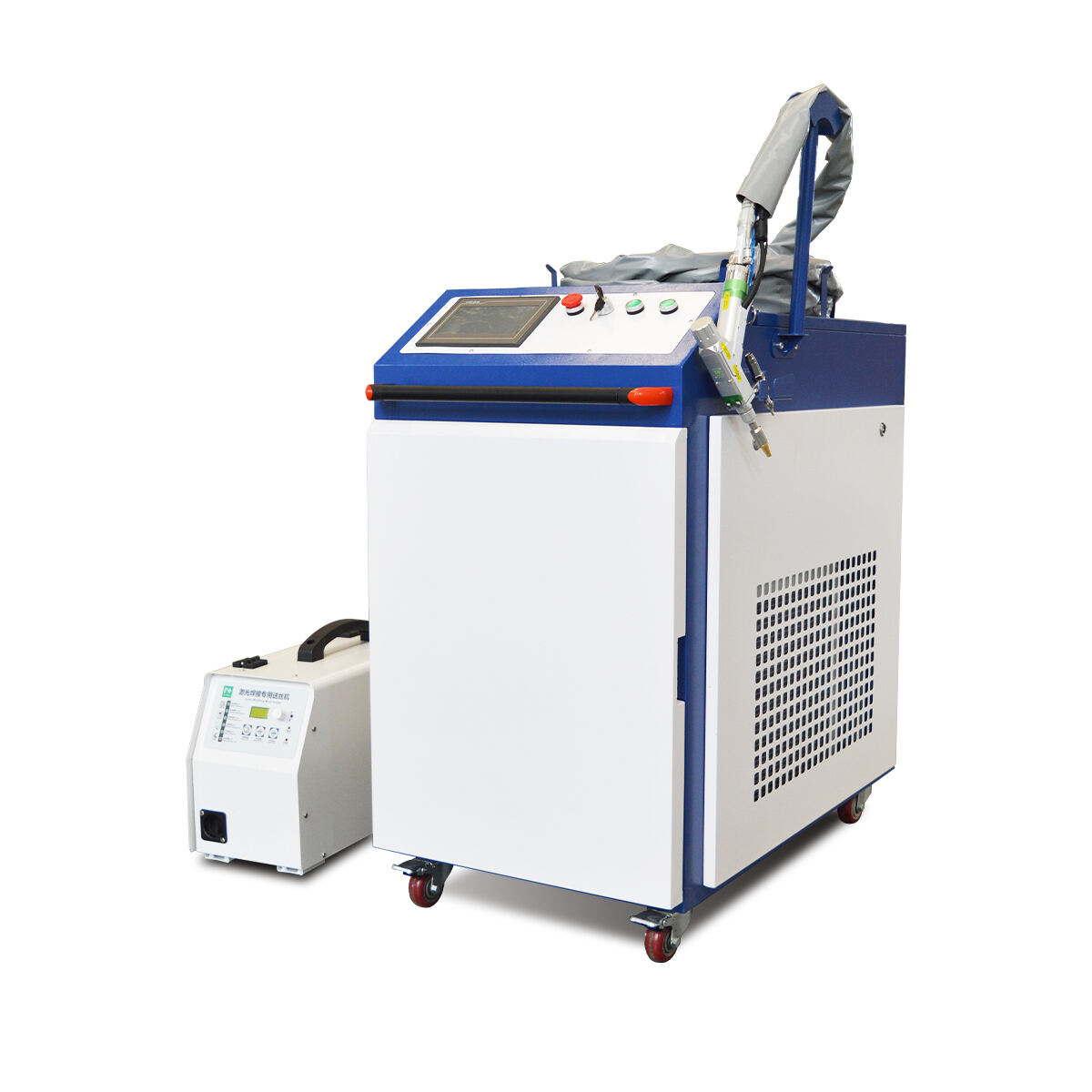Is a Laser Welding Machine Suitable for Small-Scale Operations?
Is a Laser Welding Machine Suitable for Small-Scale Operations?
Space Efficiency and Compact Design
Laser welding machines are designed with compact dimensions to occupy minimal space, making them ideal for small workshops or environments with limited workspaces. This compact design enhances workflow efficiency by allowing these machines to integrate seamlessly into existing setups. Their portability further boosts usability across varied environments, enabling flexible utilization and easy transportation to different job sites. This aspect is particularly beneficial for small-scale operations, where space and mobility are often constraints.
Ease of Use for Limited Workforces
Modern advancements in laser welding machines have led to the development of user-friendly interfaces that require minimal training, thus making them accessible for small teams with limited experience. Automation features also contribute to reducing the skill barrier for operation by simplifying complex tasks and ensuring consistent results. Consequently, this ease of use ensures that a small workforce can maintain productivity without necessitating extensive training, thereby aligning perfectly with the needs of small-scale operations and ensuring efficient and high-quality outputs.
Adaptability to Low-Volume Production
Laser welding technology is renowned for its adaptability, supporting various production volumes and making it exceptionally suitable for low-volume, high-quality production runs typical of small businesses. The machine's versatility allows it to handle multiple small projects efficiently, reducing the downtime often associated with traditional methods. As a result, small-scale operators can benefit from the technology's efficiency and precision, enhancing their ability to swiftly shift from one project to another while maintaining exemplary welding standards.
Key Benefits of Laser Welding for Small Businesses
Precision for Thin Materials and Micro-Welding
The precision offered by laser welding machines is ideal for small businesses working with thin materials. Traditional welding methods often pose a risk of burn-through, but the controlled application of laser welders minimizes this risk significantly. Furthermore, the capability for micro-welding allows businesses to execute intricate designs and repairs, making this technology especially appealing for industries such as jewelry and electronics where such detail is crucial. By leveraging this precision, small businesses can enhance their product quality and expand their operational capabilities.
Reduced Heat Distortion in Delicate Projects
Laser welding is renowned for its ability to minimize heat input during the welding process. This characteristic is particularly advantageous for projects involving delicate or heat-sensitive components, as it significantly reduces thermal distortion. Industries that require strict tolerances and protection of sensitive materials benefit greatly from this feature, as it preserves the structural and dimensional integrity of components. For small businesses, this means maintaining high-quality standards without the drawbacks of traditional methods.
Multi-Material Compatibility (Steel, Copper, Alloys)
One of the significant advantages of laser welding technology is its multi-material compatibility. This enables small businesses to work with various metals, including steel, copper, and different alloys, without the need for multiple specialized machines. Such versatility opens up opportunities for taking on a diverse range of projects. By allowing for seamless transitions between different materials, laser welding machinery enhances operational flexibility and enables businesses to cater to a wider client base.
Cost Analysis: Initial Investment vs Long-Term Savings
Upfront Costs Compared to Traditional Systems
The initial costs of acquiring a laser welding machine are typically higher than those for traditional welding systems. This significant upfront investment can be attributed to the advanced technology, precision capabilities, and superior quality of laser welding machines. However, over time, the higher initial expense is often offset by enhanced efficiency and productivity. Businesses experience substantial long-term savings through reduced waste, lower operational costs, and improved production capabilities. When assessing these factors, it's crucial for businesses to consider not just the initial expenditure but the overall cost-effectiveness of laser welding technology.
Energy Efficiency and Maintenance Savings
Laser welding machines offer significant energy efficiency advantages compared to traditional arc welding systems. These machines consume considerably less power, translating into substantial savings on utility bills. Additionally, laser welders typically have longer operational lifespans, reducing the need for frequent replacements or repairs. The maintenance costs are also relatively low since laser welding systems require less routine upkeep than their traditional counterparts, further enhancing their value proposition for businesses concerned about operational expenses.
ROI for Prototyping and Custom Jobs
Investing in laser welding technology can significantly enhance a business's ability to produce small runs of prototypes quickly and efficiently. This capability is particularly valuable for custom jobs, where quicker turnaround times can lead to improved cash flow and client satisfaction. By calculating the return on investment (ROI) associated with rapid prototyping and the ability to meet diverse client demands, businesses can illustrate the financial benefits of adopting laser welding technology. The precision and versatility of laser welding enable small businesses to cater to varied customer needs, translating to improved profitability and competitive edge.
Conclusion
In summary, while the initial cost of laser welding machines may seem high, the long-term savings and efficiency gains make them a worthwhile investment. Businesses should weigh the advantages like energy efficiency, reduced maintenance, and enhanced production capabilities when considering laser welding as a solution. These benefits underscore the financial and operational merits of choosing laser welding technology over traditional methods.
Laser Welding Machine for Small-Scale Applications
Compact Fiber Laser Technology Overview
Compact fiber laser technology is designed specifically for small-scale operations, offering high-quality welds with an efficient and space-saving design. This is crucial for businesses that operate in environments with limited space, as compact systems can easily be integrated without sacrificing performance. The flexibility of fiber lasers in delivering precise and reliable welds also makes them an excellent investment for small workshops. By maximizing floor space utility, businesses can enhance productivity, fulfilling the needs of small-scale operations effectively.
Technical Specifications: Power Range & Materials
Understanding the power range of laser welding machines is essential for selecting the right system for your needs. Laser welding machines with customizable power settings can accommodate various materials and thicknesses, increasing operational versatility. For instance, having a machine that can adjust its output power from 8 to 11 J/pulse allows for effective welding of materials from stainless steel to copper. This flexibility enables businesses to target multiple applications and manage different material characteristics more efficiently.
Applications in Jewelry, Electronics, and Repairs
Laser welding is particularly valuable in industries such as jewelry, electronics, and repair. In jewelry, its precision allows for intricate design work that enhances the overall aesthetic quality of the product. For the electronics sector, laser welding provides the accuracy needed for assembling tiny components essential in circuit boards and micro-devices. Moreover, repair processes benefit from the laser's ability to apply heat in a controlled manner, thus minimizing damage to surrounding areas—a critical factor in repairs where material integrity is paramount.
Integrated Safety Features for Small Workshops
To ensure safety and compliance in small workshops, modern laser welding machines are equipped with integrated safety features. Features such as automatic shut-off, fume extraction systems, and protective enclosures are standard to protect operators from potential hazards. These additions not only secure the workspace but also align with regulatory standards governing welding operations. A safe working environment enables workshops to maintain productivity without compromising employee well-being, fostering a culture of safety and efficiency.
Comparing Laser vs Traditional Welding Methods
Speed Advantages Over TIG/MIG Welding
Laser welding provides a distinct speed advantage over traditional techniques like TIG and MIG welding, making it ideal for small businesses aiming to boost throughput. This advanced welding method incorporates highly concentrated laser beams, allowing for rapid completion of projects. The increased speed not only enhances productivity but also results in significant cost savings, as jobs are accomplished in a fraction of the time compared to conventional welding methods. For enterprises managing multiple projects, laser welding's efficiency becomes not just a time-saver but a strategic cost advantage.
Minimal Post-Processing Requirements
The precision of laser welding significantly reduces the need for extensive post-weld treatments such as grinding or finishing. Unlike traditional methods that may leave residual weld marks, laser welding produces cleaner and more refined joints, minimizing the necessity for additional processing. This attribute translates into reduced labor costs and quicker project turnarounds. For businesses aiming for efficiency and cost-effectiveness, the minimal post-processing requirements of laser welding present a considerable advantage, aligning with the industry's push towards sustainable and less labor-intensive production methods.
Automation Potential for Growth Scaling
Laser welding machines are increasingly equipped with automation capabilities, making them a strategic choice for small businesses planning to scale their operations efficiently. Automation allows these enterprises to increase productivity without compromising on quality, enabling them to handle larger contracts. The incorporation of robotics and IoT in laser welding processes offers real-time monitoring and precision control, essential for maintaining high standards in complex production environments. This potential for integration into smart manufacturing facilitates growth scaling, ensuring that businesses remain competitive in an evolving industrial landscape.



